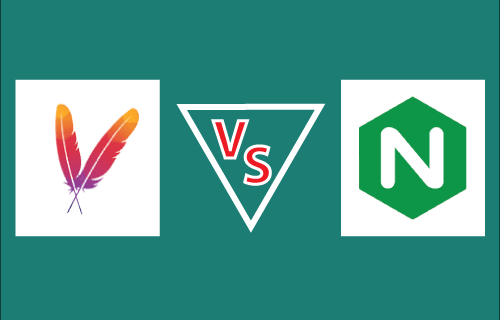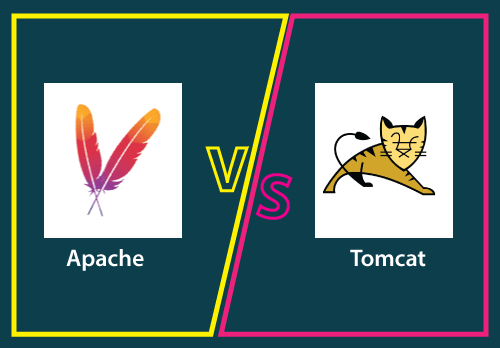What is Apache?
Apache is free and open-source software of web server that is used by approx 40% of websites all over the world. Apache HTTP Server is its official name. It is developed and maintained by the Apache Software Foundation. Apache permits the owners of the websites for serving content over the web. It is the reason why it is known as a “web server.” One of the most reliable and old versions of the Apache web server was published in 1995.
If someone wishes to visit any website, they fill-out the name of the domain in their browser address bar. The web server will bring the requested files by performing as the virtual delivery person.
Web Server Meaning
Mail servers, database servers, web servers, and file servers use different types of server software. All these applications may access a lot of files saved on the physical server and apply them for many objectives.
The aim of the web servers is to deliver websites over the internet. It behaves as a middleman among the client machines and servers to achieve that aim. It can pull the content through the server over every user request. Also, it delivers this request to the web.
One of the most critical tasks of any web server is to provide services to various different users of the web at the same time. Web servers execute files specified in a different type of programming languages like Java, Python, PHP, and many others. Web servers turn these files into static HTML files. It provides services to these files within the web server browser. Web browser can be defined as a tool liable for decent client-server communication.
Working of Apache
Apache is not any physical server; it is software that executes on the server. However, we define it as a web server. Its objective is to build a connection among the website visitor browsers (Safari, Google Chrome, Firefox, etc.) and the server. Apache can be defined as cross-platform software, so it can work on Windows servers and UNIX.
When any visitor wishes for loading a page on our website, the homepage, for instance, or our “About Us” page, the visitor’s browser will send a request on our server. Apache will return a response along with each requested file (images, files, etc.). The client and server communicate by HTTP protocol, and Apache is liable for secure and smooth communication among t both the machines.
Apache is software that is highly customizable. It contains the module-based structure. Various modules permit server administrators for turning additional functionality off and on. Apache includes modules for caching, security, password authentication, URL rewriting, and other purposes. Also, we can set up our own configuration of the server with the help of a file known as .htaccess. It is a supported configuration file of Apache.
Other Web Servers vs. Apache
There are so many web servers available that are different from Apache. All the applications of the web server have been built for different types of objectives. Apache has some rivals and alternatives and it is mostly used software.
Apache vs. NGINX

Nginx is pronounced as Engine-X. It is a new application of web server and first published in 2004. Nginx has gained popularity among owners of the websites. It was developed for solving the c10k issue, which means that the web servers using threads for managing various requests of users are unable to handle 10000+ connections at a time.
- The owners of the heavy-traffic websites can encounter performance issues because Apache uses a thread-based structure. Nginx defines the c10k issue that is one of the most fortunate ones probably.
- Nginx contains event-driven architecture. It does not build a newer process for all the requests. Rather than, it manages all the incoming requests in an individual thread. This process handles various worker processes that implement the request’s actual processing. Nginx’s event-based model shares user requests between worker techniques in an easy and efficient way hence it provides better scalability.
- Nginx can be a better choice because it can manage high-traffic websites by using minimum resources. More specifically, it can be used by several high-visibility websites like Airbnb, Pinterest, Hulu, and Netflix.
- However, Apache provides many advantages on Nginx because it has an easy configuration, a beginner-friendly environment, and various modules for medium or small players.
Apache vs. Tomcat

Tomcat cab be defined as a web server and it is improved by the Apache Software Foundation. Hence, Apache Tomcat is its official name. Tomcat is also an HTTP server. However, it improves Java applications rather than static websites. This web server can execute many distinct Java applications like WebSocket, Java EL, JSP (JavaServer Pages), and Java Servlet.
- Specifically, Tomcat was created for Java applications, while Apache has been created as an HTTP server. We can apply Apache with distinct programming languages (Perl, Python, PHP, etc.) with the support of the proper Apache module (mod_perl, mod_python, mod_php, etc.).
- Although we can apply a Tomcat web server for serving web pages (static), it is less effective for this purpose when compared with the Apache server. Tomcat can pre-load the Java VM and other libraries of Java we won’t require on most of the websites.
- Also, Tomcat is less configurable as compared to other types of web servers. The best option is an HTTP server like NGINX or Apache to execute WordPress.
Pros and Cons of Apache
Apache can be an excellent option to execute our website on a versatile and stable platform. Although, it comes with a few disadvantages we need to understand.
Pros:
- Stable and reliable software.
- Free and open-source, even for economic use.
- Regular security patches, frequently updated.
- Beginner-friendly, easy to configure.
- Flexible because of the module-based structure.
- Works out of a box with the WordPress sites.
- Cross-platform (implements on Windows servers and Unix).
- Easily available support and huge community in the case of any issue.
Cons:
- Various performance issues on extremely heavy-traffic websites.
- Several options of configuration can cause security susceptibility.
Versions of Apache
Version 1.1
This version of Apache was authorized in 2000 by the ASF. The main change is within the ‘advertising clause’ from license 1.0. ‘Advertising clause’ derived product is no longer needed to include aspects of the advertising materials (in the documentation only).
Version 2.0
Version 2.0 of Apache was adopted by the ASF in 2004 January. Its stated goals included creating the license easy for some non-ASF projects to apply. It can improve the compatibility with the GPL-based software. It allows the license to be added by reference rather than listed in all the files. It also clarifies the license over contributions. It needs any patent license over contributions that infringe the patents of the contribution necessarily.
Security of Apache
Like other web servers, Apache can be exploited and hacked. The main attacking tool of Apache is Slowloris. Slowloris can exploit the bugs within the Apache Software. It can build several sockets and keeps all of these sockets alive and sends various bytes (called “keep-alive headers”) to inform the server that the system is connected and not facing any network issues.
Many developers of Apache have defined Slowloris with several modules for limiting the damage caused. Various modules of Apache such as mod_antiloris, mod_noloris, mod_security, mod_evasive, mod_qos, and mod_limitipconn have each been suggested to reduce the possibility of the successful attack of Slowloris. Apache ships the mod_reqtimeout module as the executive solution promoted by the developers since Apache 2.2.15.
Development of Apache
Apache HTTP Server versions
| Latest Release | Initial Release | Version |
|---|---|---|
| 03-02-2010 (1.2.42) | 06-06-1998 | 1.3 |
| 10-07-2013 (2.0.65) | 06-04-2002 | 2.0 |
| 11-07-2017 (2.2.34) | 01-12-2005 | 2.2 |
| 07-08-2020 (2.4.46) | 21-02-2012 | 2.4 |
The Apache project is a collective software improvement effort aimed at making a commercial-grade, robust, freely available, feature-rich source code HTTP Server implementation. Jointly, the project has been handled by a team of volunteers placed around everywhere. It can be done by using the Web and Internet to develop, communicate, and plan any server and the related documentation.
The project is a factor of the Apache Software Foundation. A lot of users have shared their code, documentation, and ideas to the project.
Apache 2.4 version provides support for Tandem, NeXT, UX/A, TPF, and BeOS platforms.
